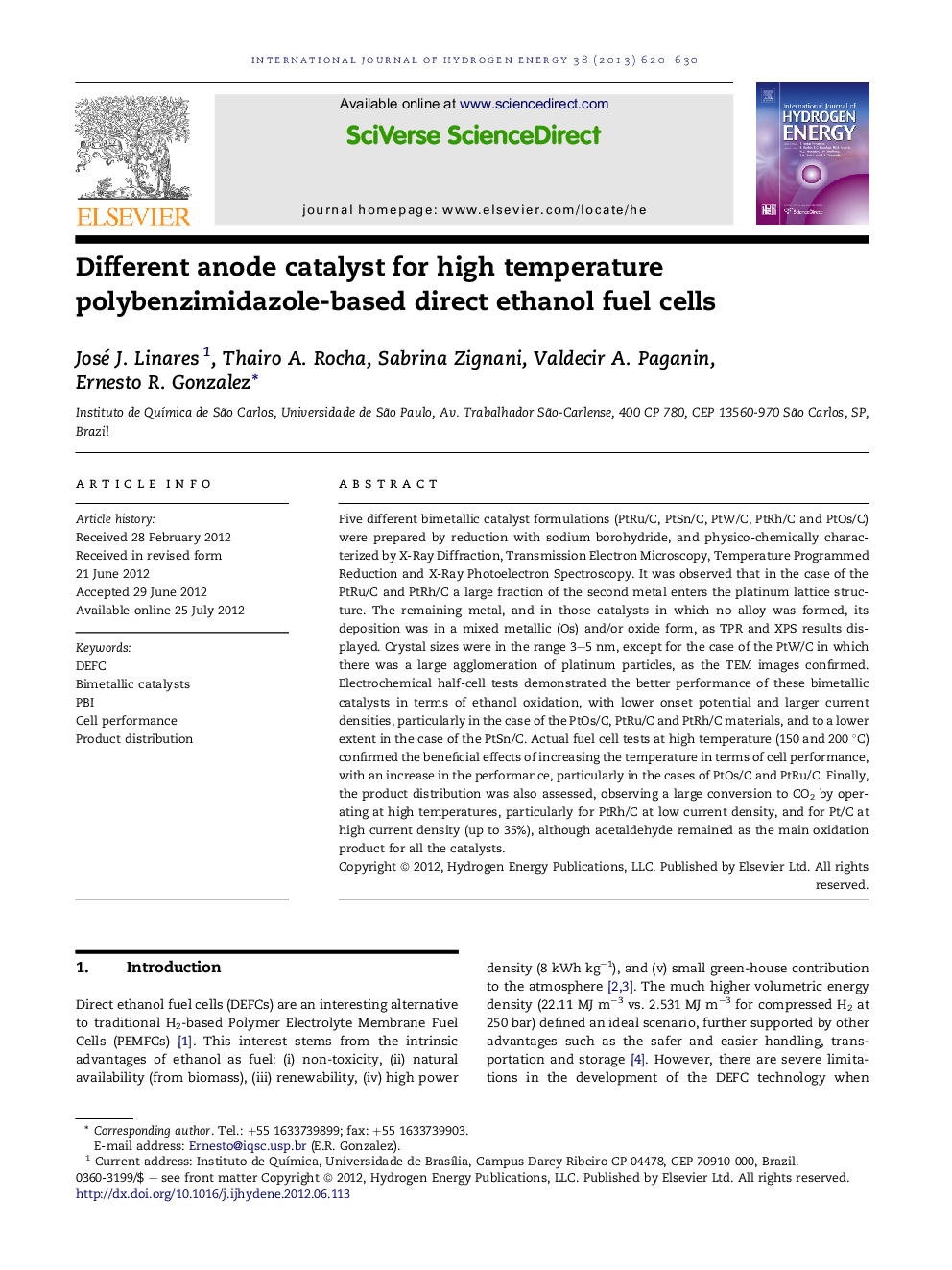| Article ID | Journal | Published Year | Pages | File Type |
|---|---|---|---|---|
| 1274411 | International Journal of Hydrogen Energy | 2013 | 11 Pages |
Five different bimetallic catalyst formulations (PtRu/C, PtSn/C, PtW/C, PtRh/C and PtOs/C) were prepared by reduction with sodium borohydride, and physico-chemically characterized by X-Ray Diffraction, Transmission Electron Microscopy, Temperature Programmed Reduction and X-Ray Photoelectron Spectroscopy. It was observed that in the case of the PtRu/C and PtRh/C a large fraction of the second metal enters the platinum lattice structure. The remaining metal, and in those catalysts in which no alloy was formed, its deposition was in a mixed metallic (Os) and/or oxide form, as TPR and XPS results displayed. Crystal sizes were in the range 3–5 nm, except for the case of the PtW/C in which there was a large agglomeration of platinum particles, as the TEM images confirmed. Electrochemical half-cell tests demonstrated the better performance of these bimetallic catalysts in terms of ethanol oxidation, with lower onset potential and larger current densities, particularly in the case of the PtOs/C, PtRu/C and PtRh/C materials, and to a lower extent in the case of the PtSn/C. Actual fuel cell tests at high temperature (150 and 200 °C) confirmed the beneficial effects of increasing the temperature in terms of cell performance, with an increase in the performance, particularly in the cases of PtOs/C and PtRu/C. Finally, the product distribution was also assessed, observing a large conversion to CO2 by operating at high temperatures, particularly for PtRh/C at low current density, and for Pt/C at high current density (up to 35%), although acetaldehyde remained as the main oxidation product for all the catalysts.
► PtRu/C, PtSn/C, PtW/C, PtRh/C and PtOs/C have been prepared by NaBH4 reduction. ► Ru and Rh form alloys with Pt, whereas the others deposit in the form of oxide. ► Surface and bulk structure and morphology affect the ethanol oxidation performance. ► Conversion of ethanol to CO2 is also influenced by those properties. ► High temperatures significantly increase the CO2 percentage in the anode exhaust.
